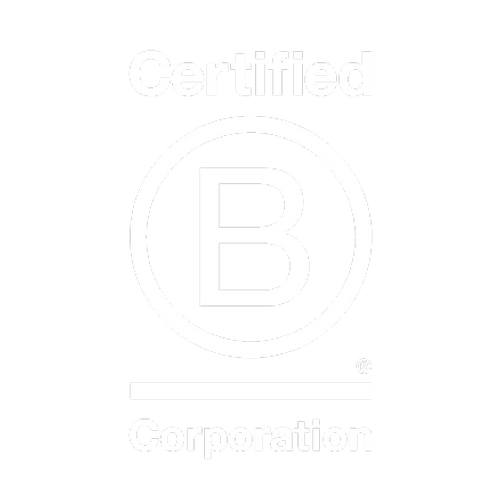Upcycling kitchen cabinets is an excellent way to breathe new life into your existing decor. This eco-friendly and cost-effective approach can transform your cooking space, giving it a fresh look without the need for expensive replacements 🌟
This guide will help you get ready to upcycle your cabinet doors and units, from emptying out the contents to sanding them down. We will delve into the importance of priming in upcycling and how to choose a suitable primer for your cabinets 🖌
We'll also share proper techniques in painting existing cabinets, including tips on filling old screw holes.
Finally, we'll wrap up with advice on finishing off with high-quality hardware – because every detail matters when you're looking to upgrade your kitchen cabinets 🤏
Table Of Contents:
- Gather Your Tools and Materials 🧰
- Sand Kitchen Cabinet Doors and Units
- Prime Your Cabinets 🖌
- Revamp Your Kitchen Cabinets with a Fresh Coat of Paint 🎨
- Add Your Plank Hardware 🌟
Gather Your Tools and Materials
Before you start upcycling your kitchen cabinets, it's important to gather all the necessary tools and materials. This will ensure that you have everything on hand when you need it, making the process much smoother.
Tools You'll Need:
- Screwdriver or drill
- Sandpaper (120-grit and 220-grit)
- Putty knife
- Tack cloth or damp rag
- Paintbrushes (1-2 inch angled brush for corners and edges, larger brush for flat surfaces)
- Roller with foam cover (for smooth finishes)
Materials You'll Need:
- Cabinet cleaner or degreaser
- Filling compound or spackle
- Primer
- Paint
- Your chosen hardware

You may already have some of these items at home. Check before purchasing anything new! Cabinet cleaner or degreaser is an essential item as grease build up can prevent paint from adhering properly – why not try out natural cleaner like white vinegar diluted in water 💧
If your cabinets are damaged or have holes from previous hardware installation, spackle will help fill them in. A good quality primer helps create a strong bond between the surface of your cabinets and paint 🤝
Your existing cabinet handles might not fit well with your newly painted kitchen, so we suggest replacing them with some of our design-led hardware, which come in different styles, finishes and colors.
By having all of these items on hand before you start your project, you'll be able to work efficiently and avoid any unnecessary trips to the store 👌
In our next section, we will discuss how to prepare different cabinet surfaces for paint.
Sand Kitchen Cabinet Doors and Units
Before painting your kitchen cabinets, it's important to prepare the surfaces properly. Sanding is a crucial step in this process as it helps to remove any existing finish or gloss from the cabinet doors and units, allowing for better adhesion of the new paint 🎨
How to sand kitchen cabinet doors
- Remove all hardware from the cabinet doors using a screwdriver 🔧
- Clean the surface of each door with warm soapy water and let them dry completely before sanding.
- Use medium-grit sandpaper (around 120 grit) on an orbital sander or by hand. Start with horizontal strokes across each door, then switch to vertical strokes until you have covered every inch of its surface. Be sure not to press too hard while sanding as this can damage the wood underneath.
- If there are any areas that are difficult to reach with your sander, use a small piece of sandpaper wrapped around a dowel or pencil eraser instead ✏
- To ensure that all dust particles are removed after sanding, wipe down each door with a tack cloth before applying primer or paint. This will help prevent any bumps or bubbles in your final finish!
Tips:
- If you're working inside your home, consider setting up plastic sheeting over nearby furniture and floors where dust may settle during this process.
- Avoid wearing loose clothing while sanding as they could get caught in machinery which would be dangerous.
- You should also wear safety goggles if you’re using an electric sander because tiny bits of sawdust can fly everywhere!
Follow these steps and tips and you'll be ready to transform your kitchen cabinet doors in no time 🙌
Prime Your Cabinets
Primers provide a base for topcoats, ensuring better adhesion of paint onto surfaces. It also increases durability and provides additional protection for the material being painted.
Why prime kitchen cabinets?
Priming is a crucial step in upcycling kitchen cabinets as it prepares the surface for painting, helping you achieve a smooth and professional finish. Without primer, your paint may not adhere correctly, leading to peeling or chipping over time 🏚
There's quite a few benefits of priming:
- Better Adhesion: Primer helps create a surface that paint can easily stick to, improving its overall adhesion.
- Durability: By providing an extra layer of protection between the cabinet's original material and the new coat of paint, primers increase durability, extending the life span of your newly upcycled cabinets.
- Smoother Finish: A well-primed surface ensures that any imperfections are filled, making sure you get a smoother finish after painting 👌
Select the right primer for your project
Picking out the right primer depends on what type of paint you're planning to use and what kind of material your cabinets are made from. For oil-based paints, an oil-based primer is ideal; for latex paint, a water-primer may be preferable.
If you're working with dark stained wood or if there's heavy grime build-up on your kitchen cupboards, then consider using shellac-based primers as they offer superior stain-blocking properties 💪
How to prime kitchen cabinets
- Apply a coat of primer to all surfaces using a brush or roller. Allow the primer to dry completely, following the manufacturer's instructions. (Note: If you have chosen darker paint colors for your cabinets, it is recommended that you use tinted primer instead of white.)
- If necessary, sand lightly with fine-grit sandpaper once again before painting. This will help ensure an even smoother finish.
You've successfully primed your kitchen cabinets and are now ready to apply paint 🎉
Revamp Your Kitchen Cabinets with a Fresh Coat of Paint
A fresh coat of paint can completely transform your kitchen, giving them a modern and stylish look for an economical price. A cost-effective solution to breathe new life into your existing cabinets and give them a modern, fashionable look is repainting 🖼
How to paint kitchen cabinets
- For a smooth and even finish, use long, even strokes from top to bottom when painting your cabinets. Avoid overloading your brush with paint to prevent drips and uneven coverage. Invest in a high-quality paintbrush designed for cabinet painting for the best results 🖌
- Tip: When you've been painting for a while, it's easy to overlook the small details. We suggest having someone else take a look to make sure nothing has been missed.
Add Your Plank Hardware
Hide old holes
When you're upcycling your kitchen cabinetry, it's important to start with a clean slate. That means filling any old screw holes that are no longer needed or visible in your new design.
- Clean the area around each hole thoroughly with a damp cloth or sponge to remove any dirt, grease, or debris. Let it dry completely before proceeding 🧽
- Squeeze some of the wood filler into each hole until it is slightly overfilled. Use a putty knife to smooth out and level off the surface so that it is flush with surrounding areas 🔪
- Lightly sand to help further smooth the surface. Be sure not to sand too much since this could cause damage by removing more than intended.
- Tip: You may want to apply multiple thin layers instead of one thick layer if necessary – allowing each layer time to dry before adding another ⏳
If you're feeling lazy, you can cut this corner by purchasing our DERRY Backplates. That'll help disguise old holes whilst helping your new hardware make a bigger statement. These high-end fittings will give your kitchen cabinets an industrial touch and are covered with a clear protective lacquer, ensuring durability over time.

Use a template
Don't worry about drilling fresh holes in your cabinets. All you need is a template, which assists you in marking where you want your hardware to go with ease and accuracy. This way, you can be sure that it will be placed correctly every time without the hassle of measuring repeatedly.
You can purchase a plastic template or create one from a piece of cardboard ✂
- Hold a piece of cardboard up to the location of your first knob, aligning the edges with those of your cabinet.
- Use a pencil to mark the desired spot.
- Drill a hole through the cardboard. This will serve as your guide for marking all other holes on each cabinet 👍
If you don't have any cardboard available, masking tape can be used instead. However, if you're using cabinet pulls instead of knobs, you'll need to create a different template with holes for each screw. It's simple!

Get drilling
Begin by inserting the appropriate drill bit into your drill. Double-check the provided screws to ensure it's the correct size for your kitchen cabinets 📏
Align your drill bit with the hole you marked on the front of the cabinet door. Keeping a steady hand and holding the drill as level as possible, gradually begin drilling a hole. To assist in aligning your hardware correctly, maintain a level position with your drill.
When drilling, make sure to go from front to back. This will prevent splintering of the wood on the front side of the door. While some splintering may occur when drilling through to reach the back of the door, it will primarily be concealed by screw heads – and won't be visible from outside anyway.
To be extra careful, you can place a scrap piece of wood behind where you are drilling into. This will completely eliminate any possibility for blowout during drilling 👌

Install Your Hardware
You're almost there! Just a few more steps until you have kitchen cabinets that are Pinterest-worthy and the envy of all your guests 👀
Complete your project with our high-quality hardware. Our Kitchen Pull and Knob Collections offer a variety of shapes, sizes, and colors to help you achieve a sophisticated and accessible cooking space. For minimalist kitchen aesthetics, explore our PLANE T-Bar Pull and matching Knob 💅
For added character, check out our SWIRLED Collection. These pulls keep your kitchen looking contemporary while being ergonomic for easy use.
To learn how to install your kitchen cabinet hardware, head over here.

That's it! You now know how to upcycle kitchen cabinets and we're excited to see your finished project 🤩
Keep us updated with your creation by tagging us @plankhardware, where you can also visit for more budget-friendly kitchen ideas from our community.


